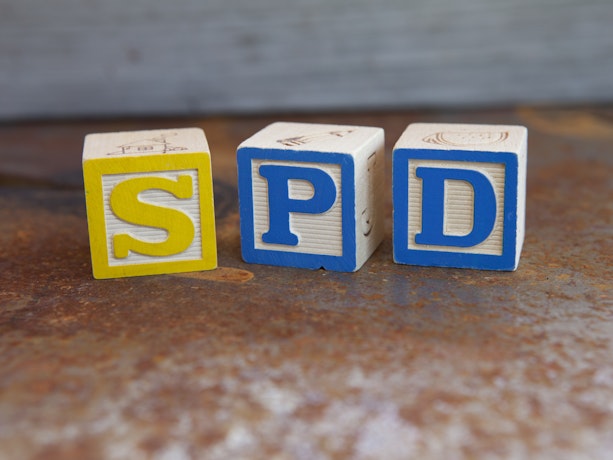In a cozy classroom with soft, calming colors, there is a young boy named Ethan. Every day, he goes to school to learn just like every other student in his kindergarten classroom. However, every day is a secret battle for him. When the morning sun shines through the windows and the classroom fan switches on, it makes a quiet noise that sounds like a roaring thunderstorm to Ethan. As the fan's unrelenting swirling intensifies, Ethan's world blurs. The capacity for his sensory body to navigate all that is happening around him reaches a near-breaking point, pushing him perilously close to the edge of sensory overload.
Ethan has something called Sensory Processing Disorder, also known as SPD. In this sensory symphony, where every sensation is cranked up to maximum volume, the most straightforward experiences can become overwhelming in a matter of mere seconds. This is the reality for countless children diagnosed with Sensory Processing Disorder (SPD).
Sensory Processing Disorder: A Brief Overview
SPD is a neurological condition that affects how an individual processes and responds to sensory information from the environment. Sensory inputs encompass various experiences, including touch, taste, smell, sight, sound, and their ability to regulate emotions (interoception) and movement.
For children with SPD, these 7 sensory inputs can be either overreacted to (hypersensitivity) or underreacted to (hyposensitivity), significantly impacting their social skills and daily life.
Difficulty with Social Interactions: Children with SPD may struggle to engage in social interactions effectively. Overwhelmed by sensory stimuli, they might avoid or withdraw from social situations to minimize sensory input. This can lead to feelings of isolation and difficulty forming friendships.
Emotional Dysregulation: SPD can contribute to emotional dysregulation. Sensory overload or discomfort can lead to meltdowns, tantrums, or outbursts. These intense reactions can make it challenging for individuals to manage their emotions and communicate their feelings effectively.
Impaired Empathy and Social Understanding: Some individuals with SPD may have difficulty understanding and empathizing with the emotional experiences of others. This can result from their sensory-focused world, making it harder for them to pick up on social cues and emotions in those around them.
Difficulty with Self-Regulation: SPD can impact a person's ability to self-regulate their emotions and behaviors. Sensory-seeking individuals might engage in impulsive or disruptive behaviors, while those who are sensory-avoidant might withdraw or shut down emotionally to cope with sensory overload.
Challenges in Adaptive Coping Strategies: Children with SPD may develop maladaptive coping strategies for their sensory sensitivities. For example, they might resort to self-soothing behaviors such as finger-flapping or rocking, which can be misunderstood by peers and lead to social ostracization.
Supporting Children with SPD
Educators are undeniably the heart of the classroom, infusing it with their passion, knowledge, and dedication. They are determined to nurture the growth and potential of every student they encounter, which can be accomplished with these five invaluable methods that offer hands-on assistance for children with SPD.
Fostering Understanding and Awareness: By actively educating themselves about SPD, educators gain a deeper insight into how it impacts their students. Recognizing the signs and symptoms of SPD and staying aware of each child's unique sensory challenges enables them to tailor their support effectively.
Customizing Accommodations: Collaborating with parents, occupational therapists, and other specialists, educators outline precise accommodations and modifications to meet the child's sensory needs. These adaptations may involve implementing sensory breaks, offering flexible seating arrangements, or adjusting classroom lighting and noise levels.
Creating a Sensory-Friendly Classroom Environment: Educators establish a sensory-friendly atmosphere by minimizing distractions, supplying sensory-friendly tools (such as fidget devices or noise-canceling headphones), offering a calming corner, and establishing clear routines to alleviate anxiety stemming from unpredictability.
Structuring Sensory Breaks: Educators identify when a child with SPD requires sensory breaks and actively provide opportunities for them to engage in sensory activities. These breaks become integral to the daily schedule, preventing sensory overload.
Promoting Social Inclusion:
To cultivate a warm and inclusive classroom environment, educators actively educate their students about SPD, fostering empathy and understanding. They enlighten the class about sensory differences while discouraging teasing or bullying. Inclusive activities and collaborative projects are actively encouraged to help children with SPD feel valued as classroom community members.
Remember that each child with SPD is unique, and their sensory needs may vary. Regular communication with parents and specialists ensures that the support children receive in the classroom is tailored to the child's unique strengths, challenges, learning requirements, and goals.
Conclusion
SPD is a complex condition that can significantly affect a child’s social and emotional development. Early childhood educators play a pivotal role in recognizing, understanding, and supporting children with SPD. By creating sensory-friendly environments and providing individualized support, educators can help these children thrive, build social skills, and develop emotional resilience, fostering a positive and inclusive learning environment for all.
References:
•Dunn, W. (2001). The sensations of everyday life: Empirical, theoretical, and pragmatic considerations. The American Journal of Occupational Therapy, 55(6), 608-620.
•Miller, L. J., Anzalone, M. E., Lane, S. J., Cermak, S. A., & Osten, E. T. (2007). Concept evolution in sensory integration: A proposed nosology for diagnosis. The American Journal of Occupational Therapy, 61(2), 135-140.






















